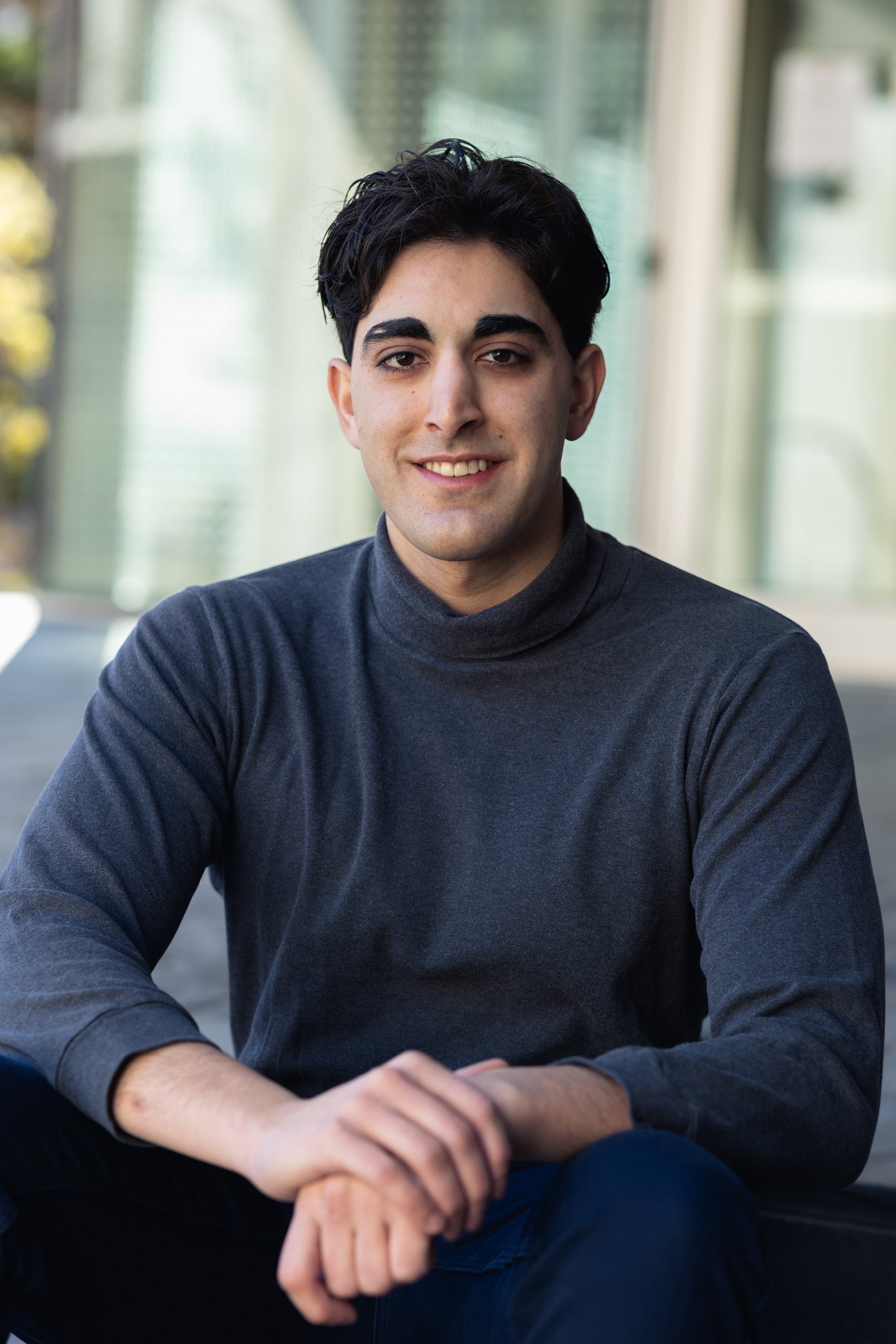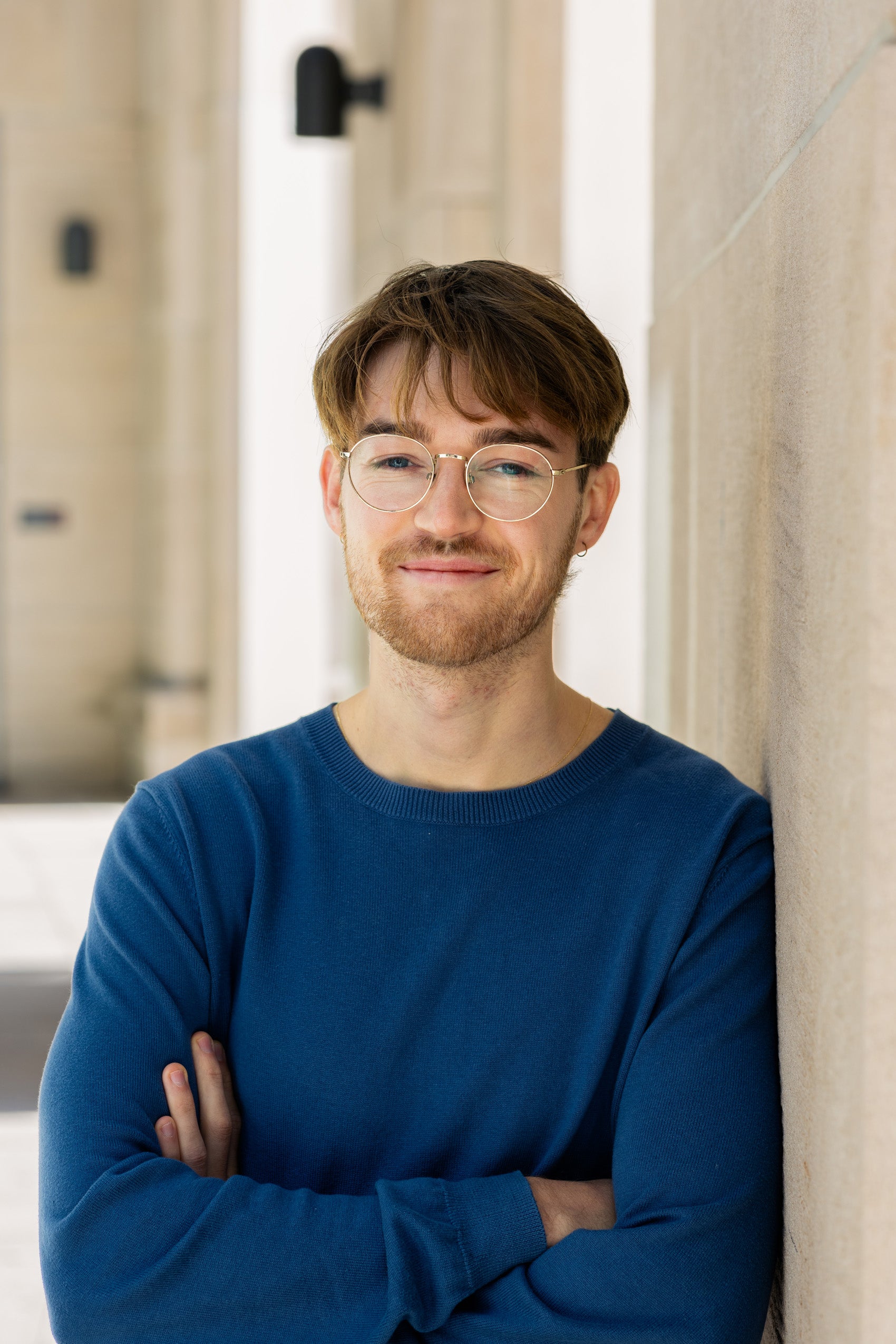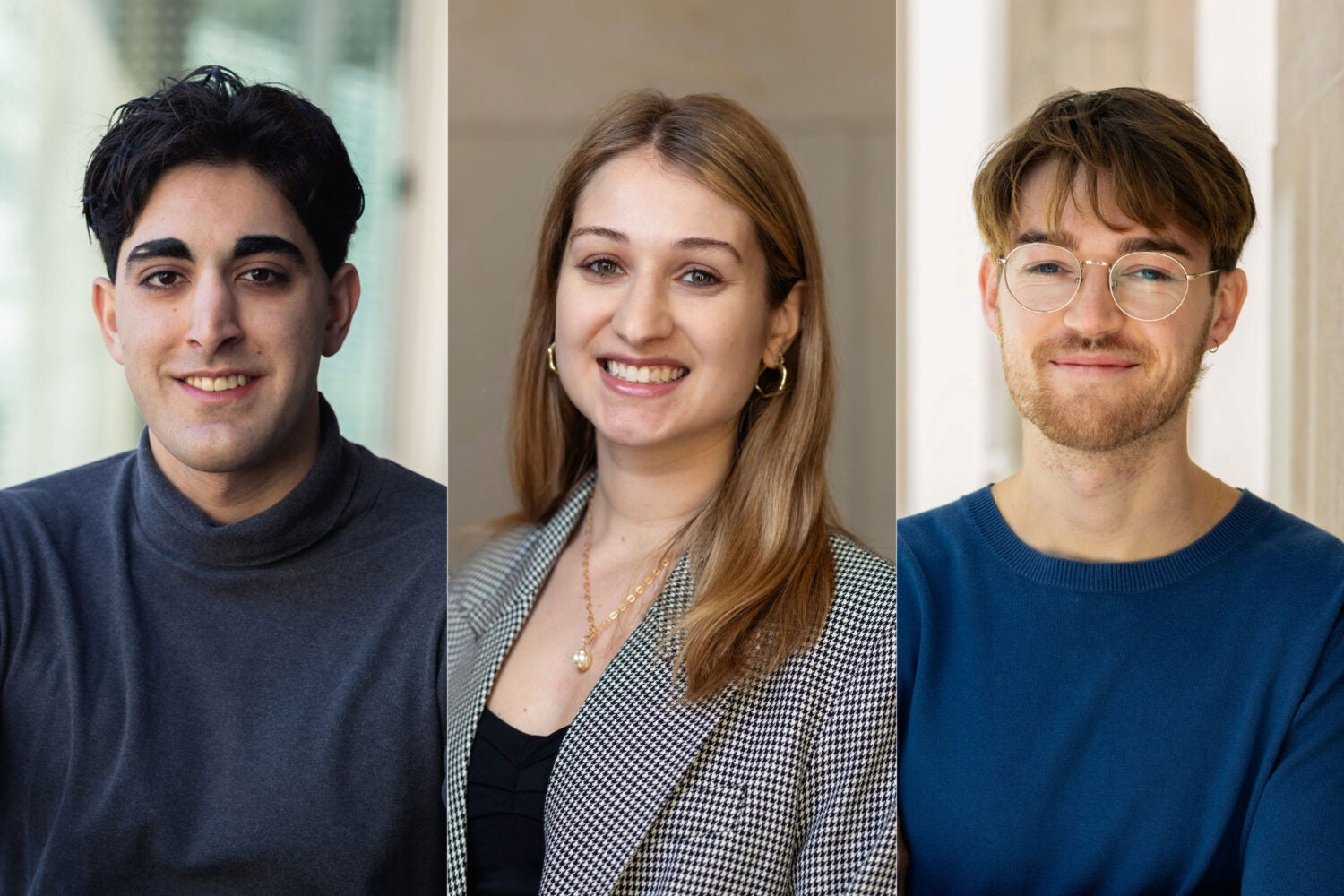In January, 88 Harvard Law School students traveled to 37 countries to undertake clinical placements or independent research with an international, transnational, or comparative law focus. This year, 12 of them were selected as Cravath International Fellows. Here is a look at the experiences of three of these students.
Arash Abbas ’26
‘I saw the human side of this … rule of law work in Pakistan’

Arash Abbas ’26 traveled to Islamabad and Lahore, Pakistan, to conduct independent research on the country’s 2024 parliamentary elections and how the Pakistan Tehreek-e-Insaf political party (PTI) was able to use non-traditional tactics to mitigate the harms of election manipulation. His goal in studying law was to see what political parties and non-state actors could do to strengthen democracy in countries where it was weakening. For a workshop on law and politics with Harvard Law Professor Nicholas Stephanopoulos, Abbas wrote a paper on the strategies employed by pro-democracy parties in Poland, Pakistan, and the United States, a project which prompted him to explore the topic in more depth through his winter term research.
Pakistan, he explains, has had periods of dictatorship and military rule followed by periods of democratic rule, but even then “the military has a history of having its thumb on the scale in support of one political party over another.” PTI had been a majority party for a decade, but when the party and its leader, Imran Khan, fell out of favor, the party encountered interference — including repression of its communications; an internet shutdown on election day; the arrest and imprisonment of Khan and other party affiliates; a prohibition on PTI candidates that caused them to have to run as independents; and implied threats against judges and pressure on the courts — when a new general election was called in 2023.
Notably, PTI was not allowed to use its symbol: a cricket bat, in honor of Khan, who played on the team that won the World Cup for Pakistan in 1992. “This is a real harm in Pakistan, as a large segment of the population is illiterate, and the symbol is the only way for them to connect a candidate with their party,” Abbas adds.
Abbas conducted more than 30 interviews with a wide range of actors, noting that his on-the-ground research enabled him to gain insights into the party’s leadership and its communication methods — information that was not available in press reports or archival sources. One interesting angle, he says, was talking to candidates who ran for office, to learn about their tactics. He also interviewed lawyers working on highly political cases, such as those involving ballot access and the tabulation of votes, the rights of PTI as a political party, and Khan’s imprisonment, and spoke with High Court and Supreme Court judges and representatives of election observer groups and human rights organizations.
He focused initially on two questions: How did PTI’s candidates gain ballot access, and how did they identify their affiliation for voters? He found that in spite of some inconvenience, ballot access was relatively straightforward, and that party leaders engaged in highly effective communications with voters. For example, they developed tools, from WhatsApp groups in every constituency to an AI tool on Facebook that identified the user’s voting location and the PTI candidate’s new symbol.
A third question also emerged. “There has always been this issue of military interference, so I wanted to understand why the manipulations in this election provoked such a strong backlash” from voters.
Through his interviews, Abbas learned that party leaders were successful in speaking out against the interference that had occurred, including using AI to generate and share speeches by Imran Khan, because he could not campaign in person due to his imprisonment. In general, “the election manipulations this time ended up mobilizing a lot of the professional class in Pakistan — a lot of lawyers ended up running as candidates — and members of the urban middle class and urban youth also became key supporters of PTI. Even if voters didn’t agree with PTI’s policies, it was viewed as the pro-democratic party.”
“I saw the human side of this kind of democratic structure/rule of law work in Pakistan,” he notes. “It gave me hope that individual actors, political parties, and civil society groups can help preserve and strengthen democracies.” In line with this view, Abbas sees himself working with a democracy reform NGO after law school, and perhaps later as a lawyer/policy advisor on Capitol Hill or in the White House.
Emily Kohn ’26
‘This experience confirmed that I prefer the fast-paced work of litigation’

Emily Kohn ’26 spent the winter term in Stockholm to undertake an independent clinical project with the American Chamber of Commerce in Sweden. The U.S. Chamber of Commerce, she explains, operates organizations like this one in countries around the world; the chamber in Sweden works to strengthen business ties between American and Swedish businesses and advocates for them with the Swedish government and intergovernmental bodies.
Kohn came to law school knowing that she wanted to pursue a career in international trade law, on behalf of the U.S. federal government, and saw her placement as an opportunity to gain experience working abroad and to learn about how businesses in other countries approach their trade relationship with the United States.
“Sweden is very export-heavy, and unique in its focus on free trade, at a time when many countries are more protectionist; it is part of the EU, but is more competitive and innovative than other member countries. It’s been a priority for the Swedish government to build stronger ties with the U.S., and the country also has security concerns because it is so close to Russia. I don’t think there’s a better place to learn about how to bridge the gap between different perspectives on how international trade should work.”
While studying at Harvard Law School, Kohn has undertaken internships that provided some insight into what a career in international trade as a litigator could look like, and saw her work with the chamber as an opportunity to develop legal advisory and policy skills.
In one of her first assignments, she worked with a Swedish trade association on its proposal to the EU-U.S. Trade and Technology Council for a new digital trade policy that would clarify regulations and help to lower barriers for tech companies seeking to do business in the EU. She researched existing regulations on technology and digital trade in both jurisdictions and options for change, then provided feedback to the association, suggesting language that might make some of its ideas more acceptable to U.S. negotiators, and drafted additional provisions that would align with its members’ preferences and with EU and U.S. interests. “I enjoyed the intellectual exercise of serving as a negotiator, trying to design policy suggestions that would be amenable to businesses and attractive to the governments implementing them,” she observes.
During her placement, Kohn also drafted a full set of revisions to the Chamber’s bylaws, some of which required substantial legal research, and drafted new guidelines for its use of artificial intelligence. “Working on the AI guidelines was especially challenging and rewarding, because many nonprofits are struggling to keep up with changing technology and create AI polices that can adapt to these changes without overburdening their staffs,” she notes.
“I feel fortunate to have handled a variety of legal and policy projects in so short a time, and I look forward to using the legal research, writing, and communication skills I developed, no matter where my future career in international trade law takes me,” she observes. “But I realized through this work that I would rather spend my career handling these types of scenarios in a courtroom. I am grateful that I had the opportunity to sample advisory, in-house legal projects and have such ownership over my work in this setting, but this experience confirmed that I prefer the fast-paced work of litigation.”
Caleb Martin ’25
‘The technology already exists, and the law needs to catch up with it’

Caleb Martin traveled to New Zealand to pursue a research project comparing legal frameworks in the U.S. and New Zealand on copyright protection for visual art created with artificial intelligence. His interest in this topic was sparked by discussions in his Harvard Law School course on copyright law with Professor William Fisher ’82 and a seminar on “The Past and Future of the Music Business” with Professor Allen Ferrell ’95. “We talked about how to address AI and its uses in the art world. It’s a bit of a Pandora’s Box — the technology already exists, and the law needs to catch up with it.”
In the U.S., he observes, “human authorship” is a requirement for copyright protection, and artistic outputs that are generated by AI are unlikely to pass this test. In contrast, other jurisdictions have developed alternative frameworks for regulating the role of AI in considering copyright protection. New Zealand’s Copyright Act of 1994 states that “in the case of a literary, dramatic, musical, or artistic work that is computer-generated,” a copyright may be obtained by “the person by whom the arrangements for the creation of the work are undertaken.” Under this framework, if other requirements for copyright are met, entering a sufficiently complex prompt into an AI system may be enough to enable copyright protection.
Intrigued by this stark and surprising difference, Martin spent time in Auckland and Wellington — two cities with a vibrant arts scene, including noted artists who use AI tools to produce art. He interviewed legal scholars to gain a better understanding of the country’s copyright laws and how they are applied in practice, and also gathered insights on cross-jurisdictional influences on this legal framework.
“New Zealand, a former British colony, has historically been highly influenced by jurisprudential and legislative activity in the United Kingdom and other former British colonies, such as Australia,” Martin explains. Its copyright act drew heavily on legislation enacted in the UK, and legislators in New Zealand will look with interest at a convening this spring, in which the UK will consider revisions to its copyright laws, as a guide for revising their own legislation. Both countries, he believes, may be “on the precipice of change,” leaning toward a more restrictive approach to copyrights for AI-generated art.
Martin also interviewed several visual artists, to gain a sense of how they were using AI in their art, and how the copyright framework impacted their work. While the legal system had some relevance — for example, on how copyright protection influenced their ability to commercialize their artistic creations — the artists he spoke with were primarily guided by artistic, moral, and ethical concerns.
“One of the artists I talked to uses his art to explore ‘what machines see and know,’ uncovering places where the technology falters or creates unexpected outcomes. Outside of the debate about copyright, maybe AI should be viewed as something that tells us more about the world. I think there’s a lot of value in that.”
“My coursework has discussed artists and artistic output in the abstract sense, without as much of a focus on the people who the law affects,” he notes. “Getting to talk to artists first-hand and seeing their artistic processes enriched and complicated what I have learned in the classroom.” Martin also sees the comparative legal analysis he undertook as good experience; after graduating this spring, he will practice corporate law in London, at a firm with an international practice.
The Cravath International Fellowships were created in 2007 by a group of partners and Harvard Law School alumni at Cravath, Swaine & Moore, led by Sam Butler ’54 and Robert Joffe ’67.
Want to stay up to date with Harvard Law Today? Sign up for our weekly newsletter.
